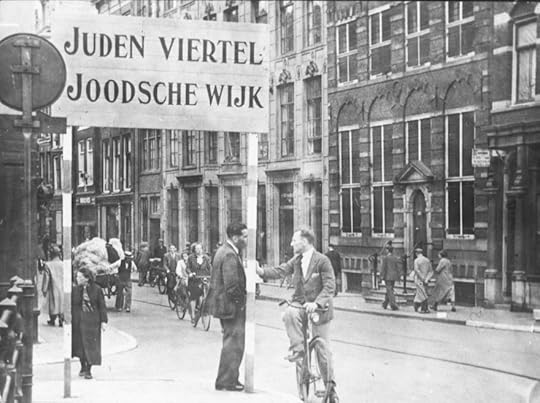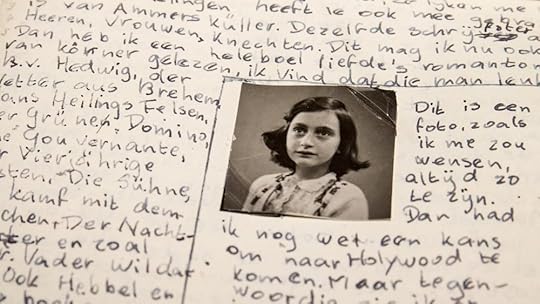Why did Holland have the highest number of Jewish victims during WW2? (Part 1)

Jewish Quarter Amsterdam, 1941/1942
My new book, The Crystal Butterfly, is about a young woman who joins the Dutch Resistance movement in Holland during WW2. She helps Jewish families to hide in safe-houses and thus stay out of the claws of the Gestapo. Despite the heroic efforts of many Dutch citizens who helped their Jewish countrymen and women, Holland had the highest number of Jewish deportations and murders in concentration camps of all European countries. How could that happen?
75% of Dutch Jews were murdered in World War II. These percentages were much lower in nearby countries like Belgium and France. And one girl for the centuries to come will be engraved in our collective consciousness as the absolute meaninglessness of this extreme cruelty: the 15-year-old Amsterdam girl, Anne Frank.
On 4 August 1944, the Frank family was transferred to Westerbork transit camp in the Netherlands, then on the very last train to Auschwitz on 3 September. By that time, over 100,000 Jews had already been deported from the Netherlands, mostly to Auschwitz and Sobibor. Per capita, Holland had thus the most Jewish victims of the Nazi regime in all of Western Europe.

Part of Anne Frank’s Diary
The Jewish population before the warBefore 1940, the Netherlands, Belgium and France had a parliamentary democracy, which had been in place for decades. Anti-Semitism always existed but wasn’t practiced openly and legally, there were no differences between Jewish and non-Jewish citizens. Thel three countries had a low percentage of Jews: less than 5 percent.
The main difference between Holland and its southern neighbors was, though, that here 85% had lived in the country for centuries and was well-integrated before the war. In Belgium and France most Jews were immigrants from Eastern Europe or refugees after Hitler came to power in 1933. (Belgium: more than 90% percent, France about 50%).
German occupation of the Netherlands, Belgium and FranceOn May 10, 1940, Germany attacked the Netherlands, Belgium, and France. After the swift defeat, the countries were occupied. The Germans adopted the same policy in all three countries: cooperation with the sitting national governments, maintaining public order, and a gradual and increasing implementation of the Nazi ideology. Hitler reckoned that a smooth integration with the German economy would be most beneficial to his regime.
The relative freedom in these countries at the beginning of the war was contrary to what happened in the Nazi-occupied part of Poland. Here the Polish authorities were brutally crushed and the violence against the population and economic plunder took place from the beginning.
France and Nazi GermanyThe situation in France was different from that in Holland and Belgium in that not all of France was Nazi-occupied. After the defeat and the armistice of June 1940, the French government moved from Paris to Vichy in the so-called ‘free zone’, which lasted until November 1942.
Marshal Philippe Pétain, the new head of the French government, largely abolished democracy and the rule of law. The authoritarian regime collaborated with the Germans and assisted in persecuting the Jews also in the ‘free zone’.
As a result, the Germans did not need to enact anti-Jewish laws and measures in France. It was done by the French government itself.
Both Dutch and Belgian governments went into exile in London at the beginning of the war. The national administration was carried out by the highest officials, who stayed in the country and cooperated with the Germans for the interest of their peoples.
Why was the situation in Holland different from that in Belgium and France?
Make it stand out
In Holland, the Germans established a civilian occupation administration that had a strong influence of fanatical Nazis and the SS. The Germans considered the Dutch as a 'Germanic brother people', so they were supposed to adopt Nazism.
This was less the case in Belgium and certainly not in France. Belgium and the occupied part of France received a German military administration led by generals. They represented the interests of the army (the Wehrmacht) and focused their attention on the planned attack on the Great Britain.
Hitler appointed the Austrian Nazi and jurist Arthur Seyss-Inquart as head of the occupation administration in Holland. Seyss-Inquart was a fierce anti-Semite and so were his most important Dutch collaborators. They set the scene for the relentless Jewish persecution.
Arthur Seyss-Inquart
TO BE CONTINUED
Based on information by historians Pim Griffioen and Ron Zeller, authors of ‘Persecution of the Jews in the Netherlands, France and Belgium, 1940–1945: similarities, differences, causes’
Preorder The Crystal Butterfly


